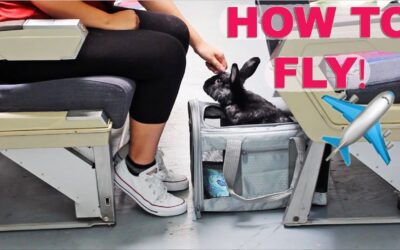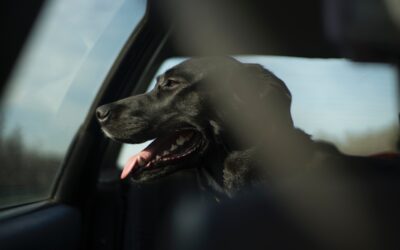An inverted nipple on a dog appears as a nipple that retracts into the skin rather than protrudes outward. It may seem as if the nipple is missing or indented.
In dogs, noticing an inverted nipple can raise curiosity or concern among pet owners. Typically, inverted nipples in dogs do not pose a health threat, and often, this condition is a harmless anatomical variation that some dogs are born with.
Nonetheless, pet parents should be aware of this trait to differentiate between normal anatomical variations and potential health issues. Nipple inversion can sometimes be mistaken for swelling or other skin problems, so understanding its appearance is crucial. Regular grooming and health check-ups will allow dog owners to quickly identify any changes to their pet’s nipples. Recognizing what an inverted nipple looks like ensures that owners can monitor their canine’s health effectively, seeking veterinary advice if there are signs of infection or other abnormalities.
Identifying An Inverted Nipple In Dogs
An inverted nipple on a dog appears sunken or recessed. This differs from the usual protrusive nipples seen on dogs. An inverted nipple may resemble a small dimple or a crater in the place where a nipple should protrude.
This condition is often a birth defect and may or may not cause issues for the dog. Detecting an inverted nipple requires a close examination of the dog’s underbelly.
Several dog breeds are more prone to having inverted nipples, including Boxers, Pugs, and Cocker Spaniels. But remember, any breed can have this physical trait. Regular checks are important for spotting changes in your dog’s skin and nipple health.
Potential Health Implications
An inverted nipple on a dog can be tricky to spot. Often, it appears as a depression or dimple where the nipple should protrude. Skin surrounding the nipple may look healthy, or it can show signs of redness and irritation. It’s vital to keep an eye on any changes.
Skin irritations may occur around the inverted area. Your dog might scratch or lick excessively, leading to more redness and possible skin injury. This makes it easier for germs to enter and cause infections.
| Issue | Potential Cause | Signs to Watch For |
|---|---|---|
| Skin Irritations | Inverted Nipple | Redness, Scratching, Licking |
| Infections | Break in Skin | Swelling, Pus, Odor |
A break in the skin can lead to infections. Signs include swelling, pus, and a bad odor. These symptoms require a vet’s quick attention to prevent serious complications.
Contrast With Normal Nipple Appearance
An inverted nipple on a dog differs greatly from a normal nipple’s appearance. A typical nipple protrudes outward, while an inverted one appears retracted or depressed into the skin. The texture around an inverted nipple may also feel unusually smooth as opposed to the regular, rougher surrounding area of a normal nipple.
In terms of color, a normal nipple often matches the surrounding skin or fur. On the other hand, an inverted nipple might display discoloration, making it appear darker or lighter than the usual skin tone. Noticing these changes in your dog’s nipples is crucial for health assessments.
Proper Management And Care
Regular checks are vital for your dog’s nipple health. During grooming or petting, gently feel for any changes. Look for signs like swelling or discharge. It is normal for dogs to have nipples that seem to turn inward.
Ensuring your dog’s comfort is crucial. Use a soft cloth for gentle cleaning. This can help prevent dirt build-up around the nipple area. Soft bedding helps avoid irritation from friction.
Consult a veterinarian promptly if concerns arise. Signs that require professional advice include persistent redness, sores, or behavior changes in your dog. Visiting the vet can lead to early detection and better management of potential issues.
Treatment Options For Inverted Nipples
Treatment options for an inverted nipple in dogs vary based on severity. Mild cases might not require intervention. Surgical interventions include procedures to correct the nipple’s position. Vets perform these under anesthesia.
Non-surgical approaches focus on managing symptoms and preventing complications. These may include specialized garments or topical treatments to protect the area. Vets also advise regular monitoring of the affected nipples.
Post-treatment, recovery and aftercare are essential for healing. Owners should follow a vet’s guidelines, which may involve cleanliness, applying ointments, and limiting activity. Check-ups ensure the nipple heals without problems.
Prevention And Monitoring
Inverted nipples on dogs may not always require intervention. Regular check-ups with a vet are crucial for your dog’s health. These check-ups help monitor any changes that might need attention. Good breeding practices are vital too. Breeders should note any inverted nipples in a dog’s lineage.
They should consider these traits before breeding to prevent passing on potential issues to puppies. A dog’s long-term health can be better with early detection and proper care. Therefore, owners should keep an eye on their dog’s nipples from an early stage. They should seek a vet’s advice if they spot unusual signs.
Frequently Asked Questions Of What Does An Inverted Nipple Look Like On A Dog
What Is An Inverted Nipple On A Dog?
An inverted nipple on a dog is a nipple that retracts inward, rather than protruding outward. It can be a congenital condition or develop over time, possibly due to scarring or underlying health issues.
Can Inverted Nipples Affect All Dog Breeds?
Yes, inverted nipples can be found in any dog breed. It’s a physical trait that isn’t breed-specific and can occur in both male and female dogs.
How To Identify Inverted Nipples In Dogs?
Inverted nipples on a dog are identified by a lack of protrusion where the nipple should be. Instead, there may be a slight indentation or flat spot on the dog’s abdomen in the nipple’s expected location.
Are Inverted Nipples In Dogs A Health Concern?
Generally, inverted nipples in dogs aren’t a health concern unless they become infected or irritated. However, monitoring is advisable to ensure no complications arise.
Conclusion
Recognizing an inverted nipple in dogs is relatively straightforward. This condition manifests as nipples that retract inward rather than protrude. While often harmless, it’s crucial to monitor for changes or signs of infection. Regular check-ups can ensure your pup’s health stays in top shape.
Always consult a vet for any concerns.


